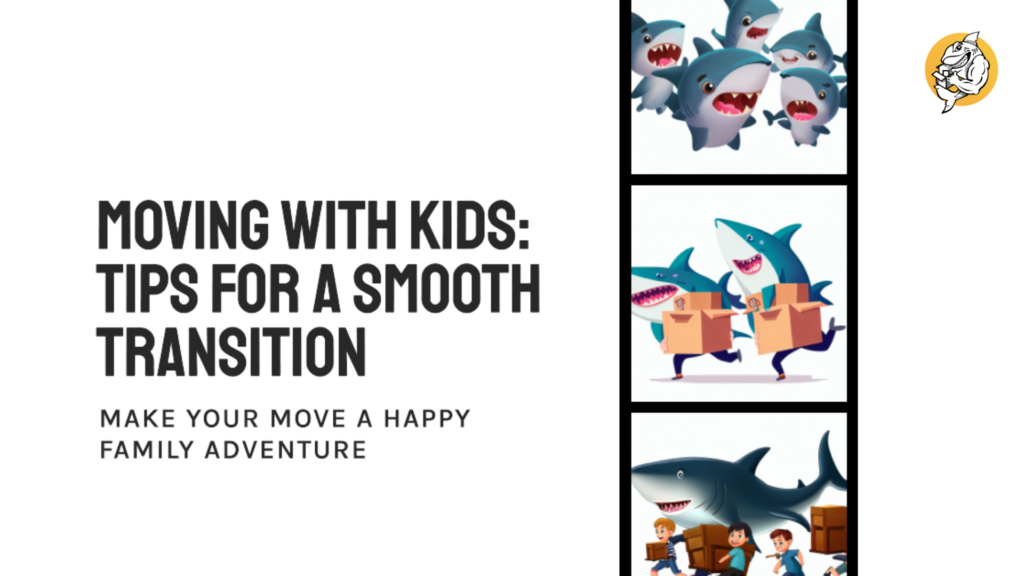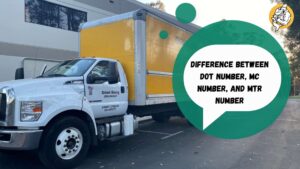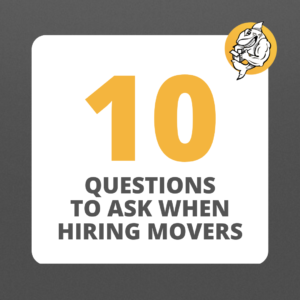Guide to Moving With Kids: Age-by-Age Insights from the Experts

Summary:
Moving is often described as one of life’s most stressful experiences. But when you throw kids into the mix, it’s a whole different ball game. There’s much to consider, from packing their favorite stuffed animals to ensuring a seamless transition to a new school. With over eight years in the industry and 50,000 completed moves, we at QShark Moving Company have learned something about moving with kids. This guide will delve into our best strategies, age by age, ensuring that the moving process for your entire family is as smooth as possible.
| Age Group | Preparation | Moving Day | Setting Up |
|---|---|---|---|
| Infants & Toddlers (0-3 years) | Maintain routine | Keep essentials handy | Set up a safe space |
| Preschoolers (4-5 years) | Open Conversations & visit the new place | Stay calm & keep them occupied | Set up their room first |
| School-age Children (6-12 years) | Open dialogue & school transition | Assign tasks & prioritize safety | Personalize their space & community engagement |
| Teenagers (13-18 years) | In-depth discussions & scout ahead | Empower them & keep the mood light | Independence in design & help them settle |
Introduction
Moving homes can be overwhelming for adults, but for kids, it often means dealing with a whirlwind of emotions. They may be excited about the new room in a new house, anxious about leaving friends and neighbors behind, or nervous about all the changes that come with a big move.
Having moved numerous families across the country, towns, states, and even long distance moving, we’ve gathered a plethora of insights:
Children of different ages respond differently to relocation. A toddler’s needs during a move differ significantly from a teenager’s.
The key is preparation. Parents can mitigate most moving day woes by planning and understanding potential challenges.
There’s an opportunity in every stage of the moving journey. From packing their belongings to setting up their new space, involving kids can give them a sense of ownership and reduce anxiety.
We’re here to guide you from finding the right boxes for your toys to saying goodbye to your old neighborhood friends. Drawing from our experience and expert insights, this guide provides a comprehensive roadmap to navigate the moving journey with your children.

Moving with Infants (0-1 year)
Preparing for the Move
When it comes to infants, familiarity and routine are paramount. They might not understand what’s happening but can sense environmental changes.
Packing Their Essentials:
Use specialized moving boxes for their items. This ensures safety and easy identification.
Consider packing a separate suitcase just for the baby’s essentials to have everything handy during the first few nights.
Maintain the Routine:
Despite the chaos of packing, try to keep your infant’s routine as consistent as possible. This helps in reducing any undue stress or anxiety.
On Moving Day
The hustle and bustle of the actual moving day can be overwhelming for an infant or kid.
Baby Carriers: These are lifesavers. It ensures you have your hands free while keeping the baby close.
Quiet Space for Naps: If you’re using our services in San Diego, or even in Los Angeles, our team is trained to create a quiet corner for your baby to nap undisturbed.
The first Few Weeks
Once at your new home, prioritize setting up the baby’s space.
Safety First: Baby-proof the new room before anything else.
Familiar Setup: Try to arrange a nursery similar to the old house to create a sense of familiarity for your infant.
Toddlers (2-3 years)
Preparing for the Move
At this age, kids begin to have a sense of understanding and can pick up on the excitement or stress from their parents.
Talk About the Move: Introduce the idea by talking about the new house. You can make it fun by drawing or using toys.
Involvement: Allow them to help in a small way, such as putting their toys into boxes. This gives them a sense of participation.
On Moving Day
Distractions are key! Toddlers are curious by nature and will want to explore everything.
Favorite Toys: Keep a bag of their favorite toys on hand. It’s familiar and comforting.
Safety: With multiple people going in and out, ensure a designated space for your toddler to play. If you’re relocating within Orange County, our local team can help set this up for you.
The First Few Weeks
The quicker you can establish a routine in the new home, the easier the transition.
Play Area: Establish a play area with their favorite toys.
Routine: Even in a new space, bedtime stories or mealtime should mirror the old routines.

Preschoolers (4-5 years)
Preparing for the Move
At this age, kids are more observant and aware. They’ll have more questions and might express excitement and apprehension about the move.
Open Conversations: Talk about the move, answer their questions, and listen to their concerns.
Visit the New Place: Take them to see the new house if possible. This will make the concept of a new homeless abstract.
Pack Together: Allow them to help pack their belongings. You can also provide them with moving boxes to let them pack some of their toys and books.
On Moving Day
Stay Calm: Children at this age can easily pick up on your stress. The process will be smoother by ensuring everything is organized, such as hiring a reliable team from Irvine or Costa Mesa.
Keep Them Occupied: Set aside some games or tasks for them so they feel involved but aren’t in the way.
Setting Up the New Home
Set Up Their Room First: Having a space that feels like theirs will provide comfort.
Explore Together: Take walks around the new neighborhood to familiarize them with their surroundings and potentially meet new friends.
School-age Children (6-12 years)
Preparing for the Move
This age group might feel the most disruption, especially if the move involves changing schools.
Open Dialogue: Talk to them about why you’re moving and what they can expect. Address any concerns about leaving friends or adjusting to a new school.
Let Them Help: They can assist in sorting and packing their items. Guide them on how to pack, especially fragile items or electronics.
School Transition: If changing schools, gather all the necessary school records and ensure a smooth transition.
On Moving Day
Assign Tasks: Give them specific responsibilities, like taking care of pets or ensuring all their boxes are accounted for.
Safety First: If hiring movers, especially if you opt for long distance moving, ensure your children know the boundaries and safety precautions.
Setting Up the New Home
Personalize Their Space: Allow them to decide the layout or décor of the kids rooms, giving them a sense of ownership.
Community Engagement: Check out local social clubs or activities in the new community to help them adjust and make friends.

Teenagers (13-18 years)
Preparing for the Move
With their developing sense of independence and established social circles, teenagers might be the most resistant to a move. Their concerns and objections are often more complex than those of their younger counterparts.
In-depth Discussions: Listen to their concerns. Moving away from friends and adapting to a new school can be daunting. Offer empathy and understanding.
Involve Them in Decisions: Whether choosing a moving date that doesn’t disrupt their school year or allowing them input on the new house, make them feel a part of the process.
Scout Ahead: If possible, visit the new place together. Explore potential schools, local hangout spots, and amenities.
On Moving Day
Empower Them: Assign significant responsibilities. This could include overseeing their rooms’ packing, ensuring their valuables’ safety, or even helping with packing fragile items.
Keep the Mood Light: This can be a challenging day for teens. Share stories of your experiences moving as a teenager, or plan a special meal as a family at the end of the day.
Setting Up the New Home
Independence in Design: Allow them full reign (within reason) in setting up their new room. This is a chance for them to express themselves.
Help Them Settle: Whether it’s finding a new doctor for a teenager with specific medical records, helping them navigate the process of making new friends, or looking into local clubs or groups that align with their interests, support them in this new chapter.
Conclusion: Moving with Kids
Every age group has challenges regarding moving, but the transition can be smooth with understanding, patience, and planning. At Qshark Moving Company, with over eight years of experience and over 50,000 moves under our belt, we’ve been privileged to be part of countless family moving stories. From our dedicated services in Rancho Cucamonga to our expert movers in Orange County, we’re always here to make your family’s move memorable. Remember, home is where the heart is; together, as a family, every new place becomes home. Contact us today to schedule your moving with kids.
FAQs
How can I prepare my child for the move?
Open communication, involving them in the process, and maintaining routines can significantly help. For age-specific advice, refer to our guide sections above.
Is it essential to change schools immediately after the move?
Not necessarily. It depends on the timing of the move and your family’s needs. Our article on the best time of year to move can provide some insights.
What should I prioritize when setting up the new home?
Setting up the children’s rooms first can help ease the transition. Creating a sense of familiarity and safety is crucial.
How do I handle the emotional challenges my teenager might face?
Empathy, understanding, open communication, and involving them in decisions can greatly help. Support them in finding ways to connect in the new community.
Do you offer specialized moving services for families?
Absolutely! From our specialized team in San Diego to our experts in Los Angeles, we’ve tailored our services to ensure the safety and comfort of families during the move.


 DIY Moving vs. Professional Movers: Pros and Cons
DIY Moving vs. Professional Movers: Pros and Cons The Ultimate Guide to Moving from San Francisco to Los Angeles: Your Step-by-Step Handbook
The Ultimate Guide to Moving from San Francisco to Los Angeles: Your Step-by-Step Handbook Difference Between DOT number, MC number, and MTR number
Difference Between DOT number, MC number, and MTR number Moving with pets: Tips for making a move less stressful for furry family members.
Moving with pets: Tips for making a move less stressful for furry family members. The Top 10 Questions to Ask When Hiring Movers
The Top 10 Questions to Ask When Hiring Movers